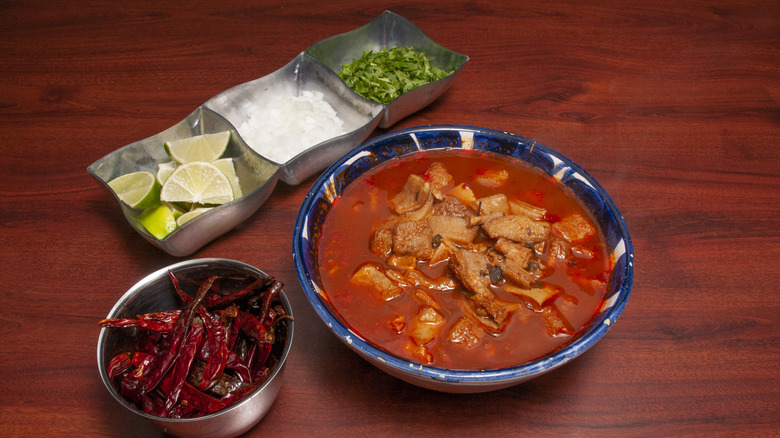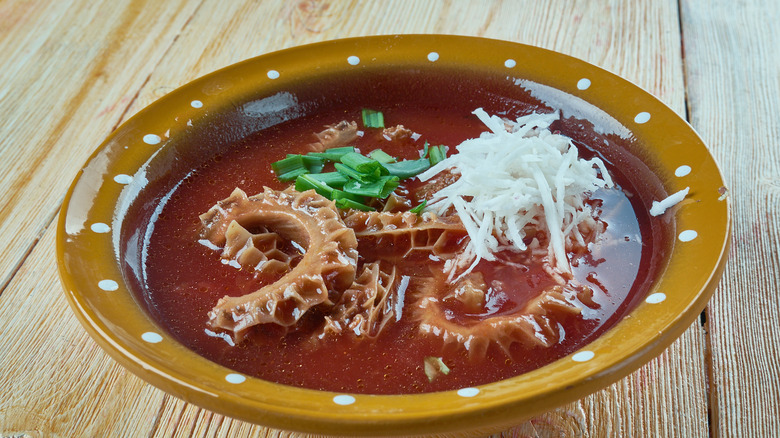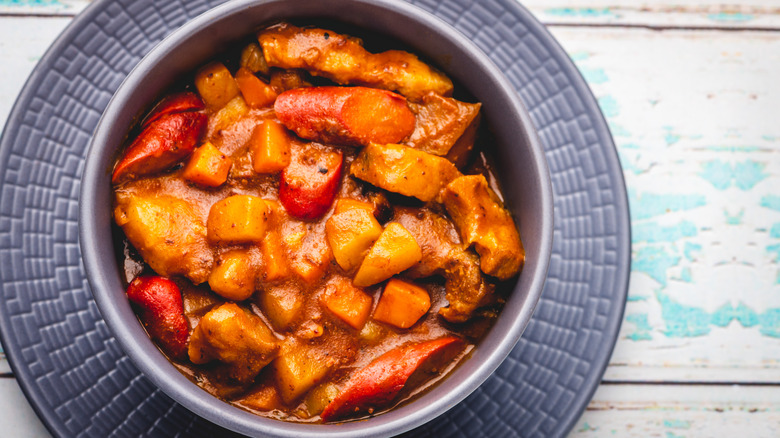The Difference Between Mexican And Filipino Menudo
The ties between the Philippines and Mexico run deep. They begin in the 1500s, not long after Ferdinand Magellan discovers the islands, and ends when Mexico wins its right to be independent in 1821. In between, there was the galleon trade, which saw porcelain, spices, and rich silks sent to Acapulco from China and via Manila, and precious metals like silver sent back to the Philippines to settle debts and to buy more goods.
But the exchanges couldn't just be measured in commercial value because they had far-reaching culinary significance too. As noted food writer Doreen Fernandez points out in her book "Tikim, Essays on Philippine Food and Culture," Mexican officials and friars who undertook the journey from their home country to the exotic east brought with them produce that has become synonymous with the Philippines today. These include fruits like guava, papaya, avocado, and cacao, as well as vegetables like sweet potato, corn, and tomato. These culinary traders also brought with them the concept of cooked dishes which, in some cases, were completely transformed in order to adapt to local tastes — of which menudo is one.
Mexican menudo is made with tripe
The Spanish word menudo has two meanings, depending on the context in which it is used. "Menudo," in one instance, can refer to internal organs or offal, which is exactly what Mexican menudo happens to be.
Numerous writers spare no words in praising the curative powers of menudo — a dish that today is touted as the country's go-to cure for hangovers but was once known as the "soup of the poor." The latter reference is understandable since menudo makes use of animal parts that would have been cooked up only because discarding them could be considered a waste. But as Nuestro Stories points out, how menudo was first invented, or how it came to be the hair of the dog, remains a mystery.
To make menudo, a cow's feet and bones are first used to make broth before tripe cut into small, bite-sized pieces is added. Once the tripe is cooked, the bones and feet are removed, and a blended pepper sauce flavored with cumin is added to the tripe and broth. Hominy is an optional add-in for a bowl of menudo, and this can be dropped into the soup about half an hour before it is ready to eat. There are two versions of menudo served today: rojo or blanco, which depends on whether it contains chili peppers.
Menudo with tripe can also be found in Spain's Andalusian region, where it is also known as callos de Cadiz.
Philippine menudo is made with small pieces of meat and liver
To understand what menudo is to a Filipino diner, we would have to look at the other meaning of the word menudo, which is "small" or "slight." Here, the stew features a mix of pork and liver, also cut up into small pieces, to which a selection of cut-up root vegetables like potatoes and carrots are added. Unlike Mexican menudo, Philippine menudo is cooked in a tomato-based sauce, so the stew doesn't have the same kick, and it is eaten with rice instead of corn or hominy.
As with most dishes around the country, every city and every region will have its own take on menudo. Some cities will serve the dish with raisins and peas; others include a decidedly modern-day food — Vienna sausages — as well as chorizo, bell peppers, as well as sweet pickles. In one version that sits slightly closer to the Mexican version, pieces of chopped-up oxtail are cooked along with ham, chorizo, chickpeas, as well as red bell peppers.
But Esquire posits that the Philippine pork-and-liver version of menudo may not have developed in a vacuum. It refers to an 1844 Mexican cookbook with a menudo recipe that calls for chopped meat to be cooked up with aromatics, herbs, and tomatoes before it is thickened, which sounds like a version of the dish cooked up in Philippine kitchens today.


